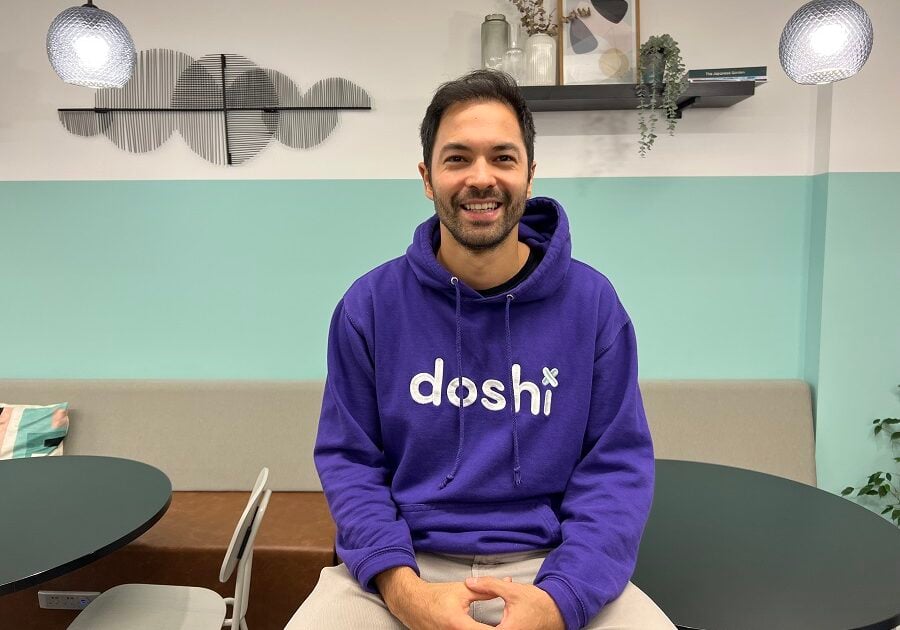Today’s teens, mostly late Millennials and early Gen Zs, have an innate ability to cope in a digital world, possessing an astonishing dexterity that Gen X and Baby Boomers (those teen’s parents) either don’t have or looks primitive in comparison.
These young adults are thus the most likely individuals to turn a profit with cryptocurrencies, yet they neither can legally trade them, nor possess a prudent approach to negotiate associated risks in that market.
That’s about to change. Meet Doshi, a multi-chain, non-custodial wallet that allows users to store and purchase digital assets, and teens to trade them, with parental approval, of course.
And as per Doshi’s survey questioning 600 young adults aged 16 and 17 in the US and UK, 63% of teens say that they are crypto-curious.
“ My business partner Jaco Koenig and I started Doshi a bit over a year ago. We initially thought of creating an opportunity for parents to start investing on behalf of their kids as the crypto market was really heating up,” Doshi CEO, Daniel Rose, told Economy Middle East during a recent interview.
“There is a revolution happening, with the metaverse disrupting the way we interact and transact, and the future of work becoming decentralized. So, we thought why not create the first crypto wallet to give teens the ability to own assets, and put them in control of investment decisions instead of asking their parents how or where to invest.”
But prior to giving access to teenagers, they needed the tools to learn about the economy, the increasing role blockchain and digital assets play, and the risks involved.
Education had to be first, and gamifying it became a must as fun in learning is core, especially when dealing with serious financial concepts.

Learning curve
Parents aren’t necessarily involved from the get-go. Their teen kids are at school or at home, exploring on their own, competing for points and prizes on leadership boards, making mock trades, or winning at gamified educational material.
“We’re giving teens a platform to access educational material on Blockchain, which is gamified and fun. But as soon as money is involved, when kids say they don’t just want to learn about blockchain, but also send or purchase cryptocurrencies, it is at that stage that we get parents involved by asking them to become sponsors,” explained Rose.
Doshi is targeting 13+ aged students, and while it launched operations in the UAE last October, the company has already engaged with 4 schools, 2 in each of the US and Europe, using a two-pronged approach.
“On one end, we’re doing an investment competition around the economic concept of cryptos, financial and digital assets, and on the other, we soon plan on supplying educators with lesson plans alongside Doshi content which require little to no experience, skills, or prior understanding of the subject matter to teach it,” said Rose.

Gamification
Doshi will be building different gamification tools within the App.
“One will obviously be leaderboards where students can compete and win prizes based on the concept of learning by doing,” said Rose.
“We’re also introducing a creator’s hub where you can produce your own art NFTs, similar to MidJourney, a cool project creating NFTs with text-based images. With these NFTs, one can like, rank, and curate for the wider community.”
Doshi is collaborating with Polygon Studios to bring the first crypto and NFT learning platform for teens to market. Polygon engages in large-scale Metaverse projects such as Decentraland and Sandbox, and with global brands such as Disney, Meta, and Adidas. Users can create their profiles, begin learning and investing, and release AI-generated NFTs.
Doshi is also giving teen certifications when they complete courses and in the future expanding that into earning points for completing missions and challenges geared for the Doshi digital space.
Doshi’s monetization strategy
The company raised a fundraising round in March 2022.
“We have a combination of educational and crypto investors who understand this is the next big thing,” said Rose.
“We will monetize on the B2B side by selling schools a subscription license for our Learning Management System which gives software access to teachers and students. It’s free for now as we learn more and improve the offering.”
On the B2C side, the company will generate income via referral fees every time a Doshi wallet is used to purchase cryptos.
“Our dream is to work with people like Disney or cool brands and create NFT collections on Doshi. We’re a gateway for the next generation to Web 3 and we want to align with brands that understand that and want to empower kids with creativity,” indicated Rose.

Parental oversight
Rose reiterated that in order for teens to own and send digital assets, they need their guardians’ consent and sponsorship.
“Parents can set the controls themselves. Some parents might give their kids $100 a month and not sweat it should the teen lose it while investing. Others might give $20 a month and observe account activities, an option that parents have. The content we give includes a lot of information but also on risks and scams surrounding cryptocurrencies, how to assess crypto projects, and what to watch out for,” indicated Rose.
“Today, the app is free because we want to scale first, but at some point, we can build added value services that we want to monetize on,” concluded Rose.
The Doshi app can be found in App Stores and Google Play Stores.








